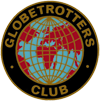Attempt no 1: booked seat on tourist bus departing Pokara for the border at 6.30 am last Sat 24 Mar. Woke at 3 am with violent diarrhoea and vomiting so no way could I even leave the hotel, so attempt no 1 aborted.
Attempt no 2: felt better on Sunday so booked seat on tourist bus leaving 6.30 am Monday as last time. No bus at 6.30 as only 60% full, but we were not told this until the 7.30 bus arrived which was only 60% full. Result 120% people for 100% seats, but I had a seat and I wasn’t moving for anybody.
Ensuing argument caused an hours delay, so effectively I was 2 hours late. The bus left at 8.30 with everybody frazzled. One hour out of Pokara, the driver attempted to overtake another vehicle on a narrow road, the offside wheels dug into the soft verge and the driver lost control.
The bus rolled sideways down a 30 metre embankment, turning over three times, and ended up sideways in a river. My side was in the water, and I was up to my neck in water. My first instinct was to get out as I didn’t know how deep the river was, and as I was opposite the door this was fairly easy. Then others and myself not injured helped the rest get out and up the embankment. Incredibly only four were injured, and only one could have been other than broken limbs (since found out it was internal injury to the liver with internal bleeding). The local villagers were great in helping us get people to the top of the bank and rescuing our waterlogged luggage. I was not injured except for bruises and scratches all over. But all my belongings were under water for some time, so all books (including LP guides), papers, photos, etc. were a mess, and everything was totally wet. I lost my distance glasses and a pair of reading glasses, and of course my camera, plus a few other comparatively minor items. Looking back, we were incredibly lucky, as there were banana trees growing on the bank that broke the fall of the bus, and the bank was only 30 metres high. The road winds through the mountains, with some vertical drops of 100’s of metres. After the police had arrived and the ambulances had departed, I got a local bus back to the hotel in Pokara, to get all my clothes laundered and clean up myself.
Attempt no 3. After enquiring about flying and finding out the cost and little saving in time, I booked on a local express (i.e. limited stops) bus departing 9.30 am on Tuesday. The travel agent put me in a taxi and told the driver where to go, but somehow I was put down in the wrong place to catch the bus, which left without me!
Attempt no 4. Back to the travel agent, who personally conducted me to and put me on the next bus at 11 am, and so I left Pokara eventually. The journey to the border was good and getting through Nepali and Indian Immigration was easy and quick. The trip on the Indian bus from the border to Ghoraphur railway station was like all trips on Indian buses – a rattling boneshaker, radio full blast with Indian music, the man next to me raving on about how India had beaten Australia in the cricket etc. So to Ghorakphur, where I managed to get a second class sleeper to Delhi on the train leaving at midnight. But the train was 2 hours late, so I sat on my backpack on the platform with two other travellers until the train arrived at 2 am. Train eventually arrived in Delhi 5 hours late at 7 pm Wednesday night. All a bit of a test of stamina, but then that’s Asia.
Next month: Tibet and how Harry Potter caused a stir at the Indian/Nepal border by Kevin Brackley! Also, part 2 of David’s adventure to be continued.
If you would like to get in touch with David, who is currently studying Italian in Perugia and has several other stories we will be including in future editions of the E-Newsletter, please contact Beetle@globetrotters.co.uk
